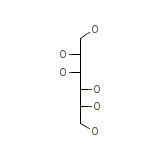Maxaquin




Maxaquin Brand names, Maxaquin Analogs
Maxaquin Brand Names Mixture
- No information avaliable
Maxaquin Chemical_Formula
C6H14O6
Maxaquin RX_link
http://www.rxlist.com/cgi/generic4/osmitrol.htm
Maxaquin fda sheet
Maxaquin msds (material safety sheet)
Maxaquin Synthesis Reference
No information avaliable
Maxaquin Molecular Weight
182.172 g/mol
Maxaquin Melting Point
168 oC
Maxaquin H2O Solubility
216 mg/mL
Maxaquin State
Solid
Maxaquin LogP
-3.506
Maxaquin Dosage Forms
Liquid; Powder for solution; Solution
Maxaquin Indication
Used for the promotion of diuresis before irreversible renal failure becomes established; The reduction of intracranial pressure, the treatment of cerebral edema, and the promotion of urinary excretion of toxic substances.
Maxaquin Pharmacology
Chemically, mannitol is an alcohol and a sugar, or a polyol; it is similar to xylitol or sorbitol. However, mannitol has a tendency to lose a hydrogen ion in aqueous solutions, which causes the solution to become acidic. For this reason, it is not uncommon to add a substance to adjust its pH, such as sodium bicarbonate. Mannitol is commonly used to increase urine production (diuretic). It is also used to treat or prevent medical conditions that are caused by an increase in body fluids/water (e.g., cerebral edema, glaucoma, kidney failure). Mannitol is frequently given along with other diuretics (e.g., furosemide, chlorothiazide) and/or IV fluid replacement.
Maxaquin Absorption
Approximately 7% of ingested mannitol is absorbed during gastrointestinal perfusion in uremic patients.
Maxaquin side effects and Toxicity
LD50=1700 mg/kg (rat oral)
Maxaquin Patient Information
Maxaquin Organisms Affected
Humans and other mammals














